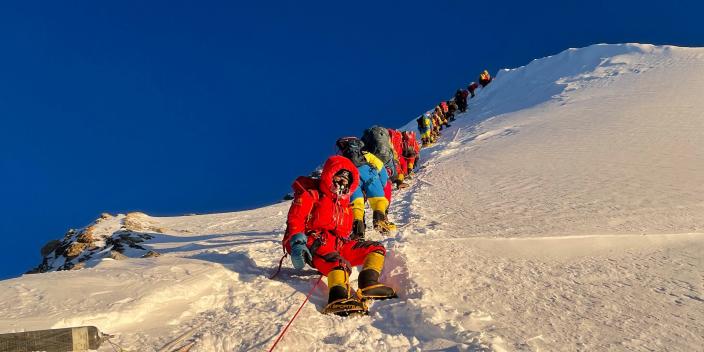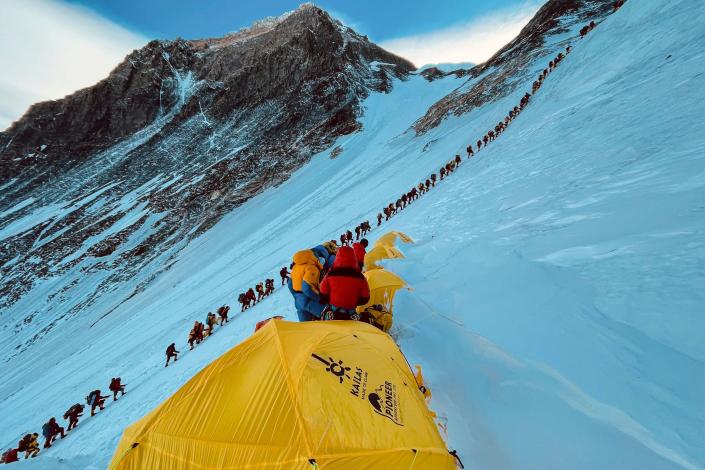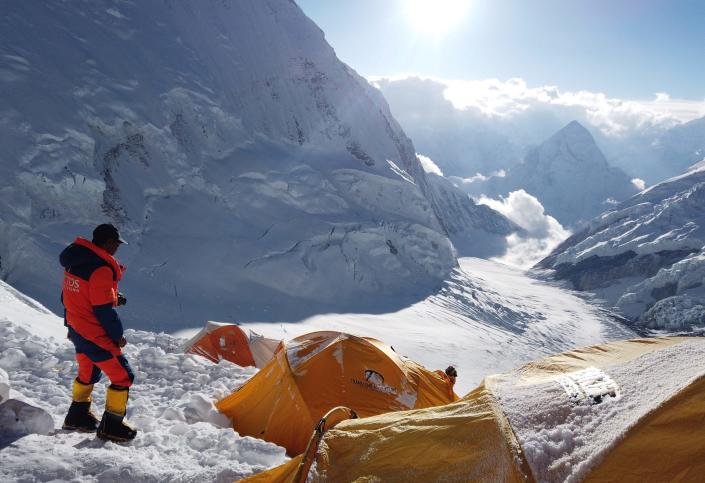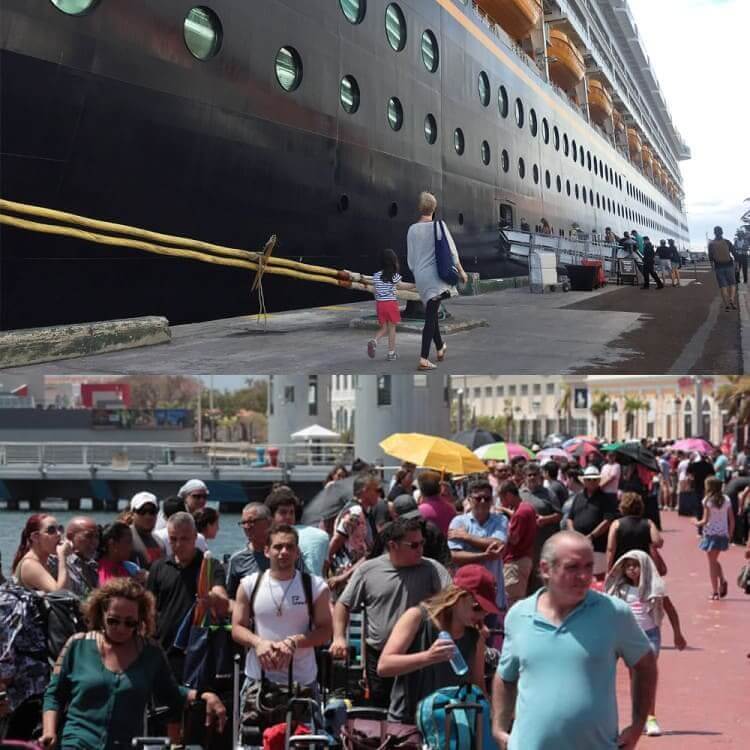I will never understand mans need to go into cold ........and i mean fucking cold .....rotundas .......such like Everest ......i can only put it down to fucking being married.....no straight single man would bother to go to a desolate fucking place.......there are no chicks !!!!!!......single men ....normal single men anyways......... i would think ....go to places where single chicks are abundant .....say a hot tropical beach .......it makes sense ......i guess if you are unhappily married........ and want to get away from it all .....after being nagged on....... all day .....Everest would be that place .......as always....... tourist have fucked it up .....not sure the attraction on the whole .....i need to climb a fucking cold ass fucking bastard place ...... and die of cold deal .......when i see numbers like........ 301 people die from climbing .........and cold ........i tend to be discouraged a lot ......i have better desires........ and ways to die ....like sky diving from the Burj Khalifa ......or between two hot babes .....but in a frozen cold rotunda ..........no thanks ........there are always better ways to die ....
Dead bodies litter Mount Everest because it's so dangerous and expensive to get them down — and 2023 could be the most deadly season yet
More than 310 people have died climbing Everest since exploration first started in the early 1900s.
It's dangerous to retrieve the bodies, so many litter the mountain to this day.
Many have blamed overcrowding for deaths in recent years, and 2023 will see a record number of climbers.
Dead bodies are a common sight on top of Mount Everest.
"I cannot believe what I saw up there," Everest filmmaker Elia Saikaly wrote on Instagram in May 2019. "Death. Carnage. Chaos. Lineups. Dead bodies on the route."
Eleven people died climbing Mount Everest that spring, in what became the peak's deadliest climbing sprint in recent memory. In 2015, an avalanche roared through Everest, killing at least 19 people. Two died climbing the mountain during the climbing season last spring.
But 2023 has already surpassed that, with 4 deaths at the beginning of the climbing season — and it's set to be the most crowded year on the mountain yet. Nepal has issued a record 463 permits to people who want to climb Mount Everest. Including sherpas that accompany climbers, that means about 900 people will be trying to summit the mountain during the 2023 climbing season.
Several people have already died on the mountain this year, even though the climbing season is just getting started. Last month, three Nepalese sherpas died while trying to set the summit rope up for other climbers. And on May 2 the first foreigner died on the mountain, an American man on his way to the summit.
When people die on Everest, it can be difficult to remove their bodies. Final repatriation costs tens of thousands of dollars (in some cases, around $70,000) and can also come at a fatal price itself: Two Nepalese climbers died trying to recover a body from Everest in 1984. Instead, bodies are often left lying on the mountain.
Lhakpa Sherpa, who is the women's record-holder for most Everest summits, said she saw seven dead bodies on her way to the top of the mountain in 2018.
"Only near the top," she told Business Insider, remembering one man's body in particular that "looked alive, because the wind was blowing his hair."
Her memory is a grim reminder that removing dead bodies from Mount Everest is a pricey and potentially deadly chore, and one that is perhaps best left undone.
Everest is crowded with tourists
It's impossible to know for sure exactly where all of the 310 recorded Everest fatalities have ended up, but it's safe to say that many dead bodies never make it off the mountain. For years, Everest climbers have spoken of a dead man they call "Green Boots" who some have spotted lying in a cave roughly 1,130 feet from the top.
Some hikers are blaming the surge in deaths, in part, on preventable overcrowding.
As May temperatures warm and winds stall, the favorable springtime Everest climbing conditions are notorious for creating conveyor-belt style lines that snake towards the top of the mountain. Climbers can be so eager to reach the peak and stake their claim on an Everest summit that they'll risk their lives just to make it happen, even when others caution them to stay back.
Other Everest climbers complain about risky human traffic jams in the mountain's so-called "death zone," the area of the hike that reaches above 8,000 meters (about 26,250 feet), where air is dangerously thin and most people use oxygen masks to stay safe.
Even with masks, this zone is not a great place to hang out for too long, and it's a spot where some deliriously loopy trekkers start removing desperately-needed clothes, and talking to imaginary companions, despite the freezing conditions.
Often, these tourists have spent anywhere from $25,000 to $75,000 to complete this once-in-a-lifetime trek.
Removing bodies is dangerous and costs thousands of dollars
Getting bodies out of the death zone is a hazardous chore.
"It's expensive and it's risky, and it's incredibly dangerous for the Sherpas," Everest climber Alan Arnette previously told the CBC. "What they have to do is reach the body, then they typically put it in some type of a rigging, sometimes a sled but often it's just a piece of fabric. They tie ropes onto that, and then they do a controlled slip of the body in the sled."
Arnette said he didn't want his body to go that way, and he signed some grim "body disposal" forms before he climbed Everest, ordering that his corpse should rest in place on the mountain in case he died during the trek.
"Typically you have your spouse sign this, so think about that conversation," he added. "You say leave me on the mountain, or get me back to Kathmandu and cremate, or try to get me back to my home country."
"There's sort of this idea that there's only one mountain that really matters in the kind of Western, popular imagination," filmmaker and director Jennifer Peedom told Business Insider when her documentary, "Mountain" was released.
Peedom has climbed Everest herself four times, but says the thrill of summiting Everest is largely relegated to the history books, and for "true mountaineers," it's basically just an exercise in crowd control these days.
"There seems to be a disaster mystique around Everest that seems to only serve to heighten the allure of the place," she said. "It is extremely overcrowded now and just getting more and more every year."
R






No comments:
Post a Comment